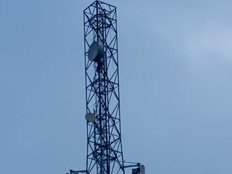FirstNet CIO Highlights Project Challenges
Many agencies today don’t have the wherewithal to go it alone on massive projects, especially on initiatives that have far-reaching implications beyond their offices and agencies. Oftentimes, a dependency on other federal and local agency partners is critical to a project’s success and requires working through the growing pains of modernizing disparate technology, communicating with multiple stakeholders and defining the way forward.
As CIO of the First Responder Network Authority (FirstNet), Jim Gwinn is working through these challenges. Gwinn, who has been on the job about a month, is tasked with developing the information technology organization that will support FirstNet. The initiative will for the first time provide a high-speed, nationwide network for an estimated 7 million emergency responders.
“It’s very important to understand that this has never been done before,” Gwinn said at the GITEC 2014 Summit in Baltimore. “If it were easy to do it would have already been done.”
Laying the Groundwork for a Support Network
Today, first responders rely on more than 10,000 disparate networks to do their jobs, Gwinn said. The 2012 Middle Class Tax Relief and Job Creation Act that created FirstNet as an independent authority requires Gwinn and his team to consult with state and local entities that will rely on the network, especially those in rural areas.
The needs of police and fire departments in New York City differ from the needs of emergency responders in rural America, Gwinn said. “You have to build for both.”
Laying the groundwork to solicit information from 56 different states, tribal councils and D.C. is a critical first step, he said. At the end of April, FirstNet sent out initial consultation packages to states and territories to better understand the unique needs that will frame planning for FirstNet.
FirstNet’s chief technology officer will review what technology is available in the commercial sector to build out the network and, down the road, what types of applications will enhance collaboration among network users.
“This will be a significant challenge in getting what we like to do and what we need to do right,” Gwinn said.
FirstNet isn’t building the network in a vacuum and then selling the concept to potential users. “We are reaching out and pulling in the ideas,” Gwinn said. “The requirements are coming to us.
The 2012 law that established FirstNet allotted $7 billion for the initiative through Federal Communications Commission spectrum auction revenues, but funds to sustain the network will come through user fees and other revenue.
“If you look at the business model for this, the purchasers of our service are the very people that are defining what those services should be,” Gwinn said.








